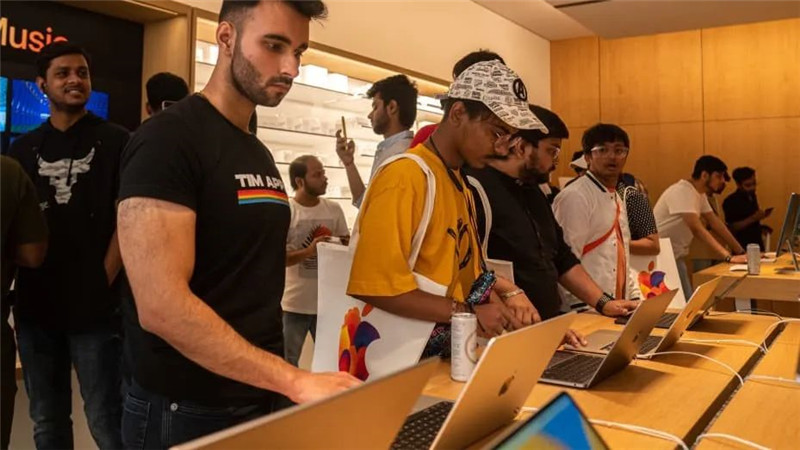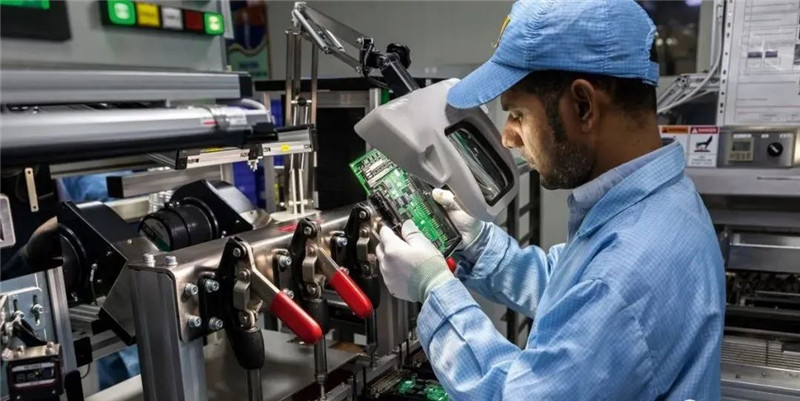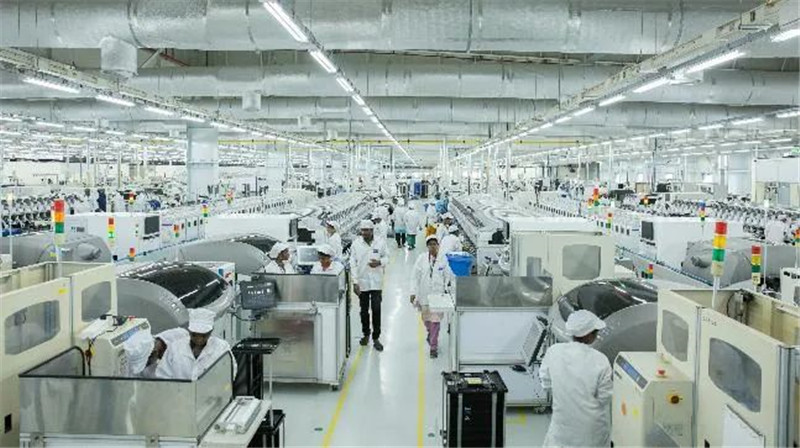India may become world's third largest consumer market by 2027! But business environment makes foreign investors uneasy
According to a report by BMI, a research firm under the Fitch Solutions umbrella, India's consumer market is set to become the third largest in the world by 2027, behind the US and China, as the number of middle- and upper-income households in the country grows, and the younger population drives spending. India is currently ranked fifth.
With such a large consumer market, India represents a huge business opportunity and potential for many companies. More enterprises and capital also flocked to the Indian market, but the business environment in India makes them shy away.

The BMI report forecasts that per capita household expenditure in India will increase at an average annual rate of 7.8% over the next few years, outpacing other developing economies in Asia such as Indonesia, the Philippines and Thailand.
BMI also estimates that India's disposable income will grow at a compound annual growth rate of 14.6 percent and household spending will exceed $3 trillion by 2027; by that time, 25.8 percent of Indian households are projected to have an annual disposable income of $10,000 per year.
Most of these households will be located in economic centers such as New Delhi, Mumbai, and Bangalore.BMI wrote in the report. Wealthier households are primarily located in urban areas, making it easier for retailers to target their key target markets.
India's large young population is also a driver of increased consumer spending. About 33% of the country's population is estimated to be between the ages of 20 and 33, and BMI expects this group to spend more money on electronics.
The report predicts that communications spending will grow at an average annual rate of 11.1% to reach $76.2 billion by 2027, giving reasons such as the increasing disposable income of the tech-savvy urban middle class, which will encourage the purchase of desirable products such as consumer electronics.
In addition, the country's ongoing urbanization process will also help boost consumer spending. As more companies head to India, they can open more physical retail stores to cater to consumers.

As one of the world's fastest-growing emerging economies, the Indian market for foreign capital does have a lot of attraction. But India's push for "local manufacturing" fear of foreign investment insecurity.
In order to realize the goal of "Made in India", the Indian government suddenly announced that it would restrict the import of personal desktop and laptop computers. Unless the license, or Indian enterprises and individuals will no longer be able to purchase personal computers produced abroad. This administrative order and market barriers to force the promotion of local manufacturing initiatives, so that the global computer companies were caught off guard.
India's domestic consumers questioned, this move will affect the supply of personal computers, pushing up the purchase price of computers, at the same time, India's decree of change and radical exacerbated the concerns of foreign companies. India's electronics industry association former director general Ali Akhtar Jaffe bluntly: "This move is designed to promote the development of India's manufacturing industry. This is not a light push, but a strong push."
However, the Indian government's approach, it is easy to remind people of India's previous attraction of smartphone manufacturing landing "set". For several years, in order to seize India's huge market share, multinational smartphone manufacturers have invested in India to set up factories. However, in these manufacturers and the Indian market closely tied, India has repeatedly wielded the tax or access stick, foreign enterprises to suppress.
India's tightening of personal computer imports this time, is it a repeat of the same old trick? But the Indian government plans to achieve the goal of 300 billion U.S. dollars in electronic product output value in 2026, hoping to become a "global electronics manufacturing center", still facing a number of practical obstacles.
First, India has the ability to carry out the localization of computer production, remains to be seen. Secondly, India's electronics manufacturing is still stuck in the relatively primary stage of assembly, many computer parts and components are produced and provided by foreign enterprises. The imposition of export restrictions may jeopardize the development of local enterprises. In addition, the changing policies of foreign companies to the Indian market again, I am afraid that the heart will be deterred.

In recent years, the market demand is not as expected, infrastructure construction is not perfect, the quality of labor is not high, poor business environment and other factors have become foreign enterprises to invest in India, "stumbling block", many foreign enterprises have to withdraw their investments, so that "Made in India" difficult to develop.
The World Bank in the release of the global business environment report, India as "the world's most difficult to do business in one of the countries". Due to the business environment is not stable enough, the United States Ford car due to huge losses in 2021 had to withdraw from the Indian market has been cultivated for 10 years, Tesla 2022 also due to tax issues suspended in India sales plan.
For multinational companies, the Indian market is a huge magnetic field, but also "investment black hole". In the early stage of attracting foreign investment, the Indian government often opens a series of preferential conditions, to be multinational companies stabilized "stationed", and then through a variety of means to suppress, harvest profits. Generally speaking, the seizure of funds, issued a fine is a common occurrence. India's laws are even more complex, ever-changing, so many multinational companies are discouraged.
Data is the most intuitive reflection. 2022-2023 fiscal year, India's foreign direct investment in the first time after 10 consecutive years of growth decline. According to the Reserve Bank of India statistics, the total foreign investment attracted by India in the fiscal year plunged 16.3% to 71 billion U.S. dollars, foreign direct investment decreased by 27% to 41.6 billion U.S. dollars. Separate data shows that a total of 2,783 multinational companies closed their subsidiaries or offices in India from 2014 to 2021.
After the Modi government came to power, it had launched a high-profile "Make in India" program, hoping to become the new "world factory". However, the proportion of manufacturing industry in GDP is "not rising but falling", from 16.3% in 2015 to 14.3% in 2021, from 2025 to achieve the goal of 25% farther and farther. I am afraid that it will be difficult to realize its development vision if it fails to face up to its own problems, abide by business rules and maintain its integrity, and genuinely improve the business environment.
Fer House also has a portion of Indian customers. They purchase Wire Decorative Storage Fruit Basket, Copper Garden Paper Roll Holder,Stackable Kitchen Storage Shelf from our company. Our cooperation is based on mutual trust and is a sustainable business partnership.
